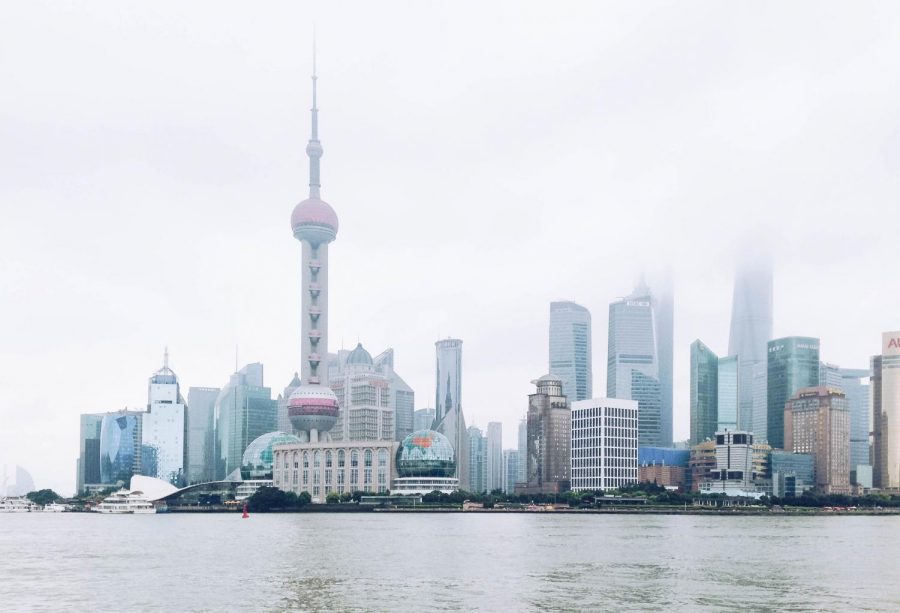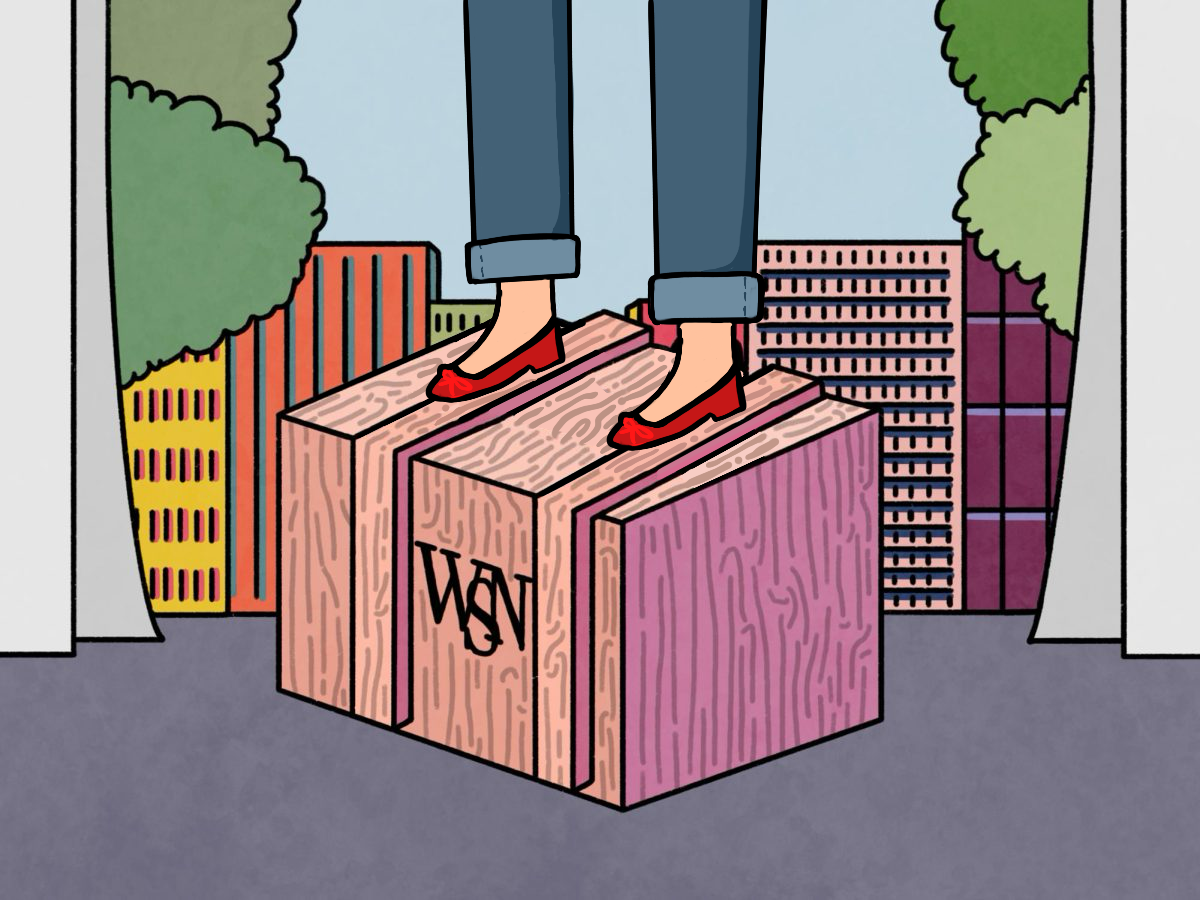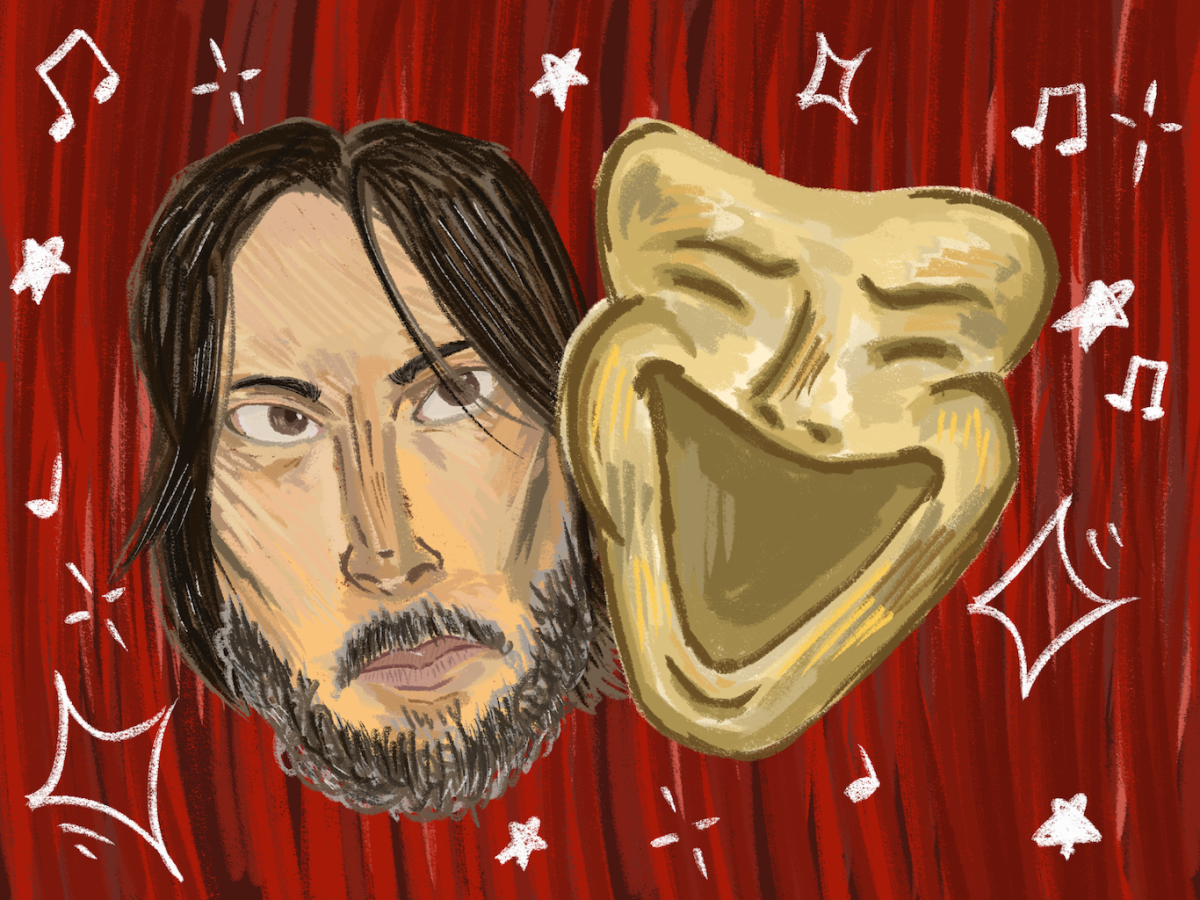We know him for the culture he invented with the Pop-Art movement, but also for his signature white hair and black ensembles. The circle fashion that came from Warhol can be seen in the artist’s most famous pieces at the Whitney Museum in his first major New York retrospective, “From A to B and Back Again.”
“Fashion wasn’t what you wore someplace anymore; it was the whole reason for going,” Warhol once said. The three floors exhibition, provides evidence of Warhol’s influence on fashion tracing all the way back to his work as a commercial illustrator.
Warhol’s piece, “The Golden Shoes” hangs on the fifth floor. He gained inspiration for this series by his work as an advertiser for the shoe company I. Miller and Sons. Each shoe is named after a celebrity personality, including Elvis Presley, James Dean and Julie Andrews. All of the shoes are the same color and are all blotted line drawings of golden shoes over newspaper. The shoes differ in design, showing the variety of celebrity personalities. These pieces are an early example of how Warhol fused art and fashion.
Warhol was truly obsessed with fame, and, through his influence, invented his own crowd of celebrities — the superstars. Superstars were the edgy actresses, models and artists who he worked and partied with. He moved his work to the silver screen with his superstars Edie Sedgwick, Ingrid Superstar, Ultra Violet and Candy Darling. The films were generally hours long and filled with pure nonsense: what made them worth watching were the stars and their style. The third floor consists of four small TVs which preview Warhol’s films, the TVs each have headphones and a stool to sit and watch the films of varying length. One of Warhol’s films displayed in the exhibit is “Andy Warhol and Fashion,” where Warhol executes a number of interviews with male models discussing the fashion industry and the stigma around the profession. Warhol’s fascination with beauty and aesthetics and criticism of that obsession is a irony that still exists in the industry today.
Warhol’s silk screens of celebrities make up a large majority of the exhibition, including his first screenprint of Marilyn Monroe which was created soon after her suicide. The portrait is a split screen of half a collage of 25 repeated images brightly colored in orange, yellow, pink and blue and the other half consists of 25 black and white images. The famous piece hung by itself and spanned the majority of a white wall. The other celebrity silk screens of stars like Jacqueline Kennedy, hung on the fifth floor. Not only have these prints and color patterns been reused in the fashion industry, but Warhol’s affinity for public figures has led many designers to draw inspiration from celebrities themselves.
Complementing these screenprints are illustrations for companies and magazines, pieces that predate Warhol’s rise to fame. As well as more of his most famous pieces, there is an entire room dedicated to his flower series.
In 1962, Warhol came out with his paper dress, on which he printed 32 Campbell’s soup cans. He made these dresses for socialites to wear to parties, a style that has been replicated many times since then. Arguably his most famous piece depicts Campbell’s soup cans printed on a separate canvas each about a centimetre apart, which all together, gives the illusion of a large canvas of 32 Campbell’s soup cans.
Much of Warhol’s work is emulated in fashion today. While moving through the galleries, the work shown may catch your eye for more than one reason. Jeremy Scott, the designer for Moschino, has used Warhol as inspiration in many of his lines, including Warhol’s famous Coca-Cola print and Budweiser print which can be seen adorning his jackets and dresses. Calvin Klein made a deal with the Andy Warhol Foundation for the Visual Arts allowing their creative director, Raf Simons, access to the Warhol archives for three years. You can now find Warhol Flowers on Calvin Klein denim and his silk screens on towels, skirts and tank tops (some of which were on sale at the Whitney gift shop).
Warhol’s influence resounds decades after his life and only grows more relevant as we continue to think critically about the fashion industry and celebrity culture. Warhol acknowledged the irony of loving and critiquing beautiful things. A tension that lovers of fashion still feel.
A version of this article appeared in the Monday, Nov. 19 print edition. Email Hanna McNelia at [email protected].

























































































































































